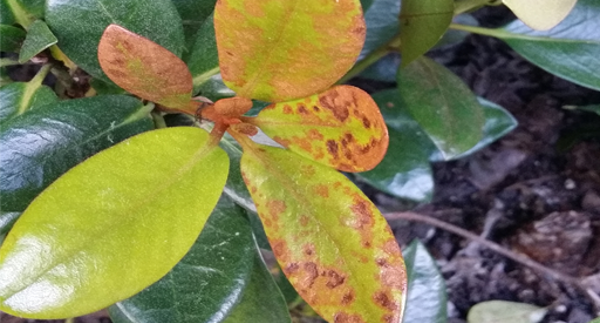
Many areas of the country have had some good frosts which could have affected plants in your garden. If you have experienced frost over the cooler season you may be starting to see visible signs of damage to your plants. We have put together some top tips to help if you suspect your plants have been affected by frost.
- Don’t be tempted to cut the frost damage off yet, that will force new growth which will also get damaged if there is another frost. Leave it for another few weeks to be sure the risk of frost has passed.
- Don’t feed plants yet if you suspect frost damage as the same thing can occur. New fresh growth will not have time to harden off if there is a late frost. Wait until new growth appears before removing damaged plant material.
- Apply Tui Organic Seaweed Plant Tonic every 7-14 days, this will help the plants recover quickly. As it's a tonic not a fertiliser it won't have the same effect as a fertiliser in pushing new growth.
- Tui Organic Seaweed Plant Tonic will even provide frost protection when applied at a rate of 70ml per 9 litre watering can at 7-10 day intervals before the frosts appear. It will give frost protection up to minus 5 degrees.
- Similarly some lawns will be starting to look a little yellow/brown and sad, this is frost damage. Don’t be tempted to feed the lawn until temperatures warm up as the grass isn’t actively growing and so not taking up nutrients – leave it for a few weeks until temperatures warm up and the risk of frost has past. Then feed frost damaged lawns with Tui LawnForce New Lawns.
- Don’t be surprised if plants look like they have survived the frost, remaining green for several weeks after temperatures warm up then collapse. This can happen and often there is little that can be done to save the plant when it gets to this point. Don’t give up totally, some plants do regenerate successfully, it just may take some time for the new growth to appear.
Post a comment
Tips for frost damaged plants Comments
Thanks for the great advice
Valerie
I have some plants damaged by frost. Thanks for the advice, will keep an eye on them
Gail
Hi I have beetroot with great leaf but tiny 'roots'. how do I increase the size of the root please? I did plant them into not well degraded horse poo-too much nitrogen? and if so, how long do you need to wait after feeding the soil thanks Victoria
victoria
Hi Victoria, you are on the button, too much ?poo? promotes leafy growth. Your current plants won't change their growth habit now, but you can start again with new plants. The leaves are tasty, use them in salads and slaws. Enjoy! Thanks, Tui Team.
jenna
When using seasol how much would you need for fruit trees and shrubs growing in large pots? Do you need to soak them, or just add to already watered plants?
Patsy
Hi Patsy, thank you for getting in touch. You can feed 30-70ml per 9 litre watering can/bucket. They can be dunked or soaked but if big heavy pots water the plants every 7-14 days. Soaking is usually done at the time of planting. Thanks, Tui Team.
jenna
Moss is very bad in my lawns. How do I fix it?
Robin Hutt
Hi Robin, Sulphate of Iron will control moss. Check out the info here for your question: http://www.tuigarden.co.nz/news/how-do-i-get-rid-moss-my-lawn All the best, Tui Team
jenna
Is there a benefit from slowing the frost thaw, eg, keep the sun off the plants for a while?
Diana
Hi Diana, it is difficult to slow the frost thaw, especially once the sun rises, ice damages plants when they defrost too quickly, causing plant cells in the leaves to burst. The best thing to do is sprinkle frosted plants with water to melt the ice before the sun hits them, this way plants defrost slowly and so prevent cells bursting. If you expect an overnight frost cover plants with frost cloth or newspaper to protect them.
Lianne